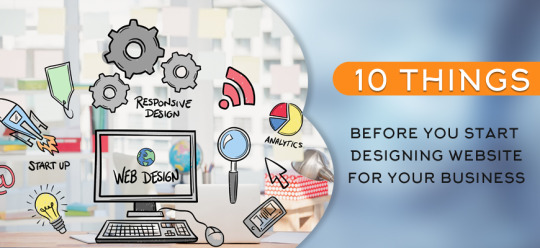10 Things Before You Start Designing Website For Your Business
Good design isn’t just about aesthetics, but also how well it functions to meet the needs of your target user. By following these 10 tips, you’ll be well on your way to creating a website that is both visually appealing and effective in helping your business grow.

So, you’re ready to create a website for your business? Before you get started, there are a few things you need to know first. Here are 10 things you should consider before designing your website:
- 1. Determine your needs
- 2. Choose a content management system (CMS) that is right for you
- 3. Prepare high-quality, unique content
- 4. Choose the right web hosting and domain
- 5. Determine the type of website you need
- 6. Create a wireframe or prototype
- 7. Plan the layout and design
- 8. Optimize for search engines (SEO)
- 9. Get input from various sources within your business
- 10. Use a professional web designer/developer
There are different types of websites your business can create: eCommerce, blog, company profile, etc. Each has its own function and serves a unique purpose. Be sure to determine which type of website is right for you before starting the design process.
1. Define your website’s purpose.
Before starting to design your website, you need to first determine its purpose. What do you want your website to achieve? Is it meant to generate leads, provide information, or sell products/services? Determining your website’s purpose will help you focus on what content and design elements are most important.
2. Think about your target user and their goals/needs
As the designer, you want to think like your website’s audience. What do they want? Do they want to learn more about your services? Are they ready to purchase a product or sign up for a newsletter? Designing for this mindset will produce better results.
3. Define the scope of content you’ll need to produce
Your website will be a reflection of your business and how much time, effort, and expertise you’re willing to put into it. If you have a lot of existing content that can be repurposed for your blog or website, use tools like Canva or Easel.ly to create a custom design. If you’re starting from scratch, be prepared to spend time writing high-quality content that engages your target user.
4. Choose the right web hosting and domain
Choosing the right web hosting provider and domain name is essential for your website’s success. Not only do you need a host that can support the amount of web traffic and page requests you’re anticipating, but also one that is up-to-date with current internet technology.
5. Determine the type of website you need
There are different types of websites your business can create: eCommerce, blog, company profile, etc. Each has its own function and serves a unique purpose. For example, if your primary purpose is to sell products and services, then an eCommerce website will likely be the best option for you.
6. Determine a content management system (CMS) that is right for you
Before starting to design your website, it’s important to determine the type of CMS you’ll need — WordPress, Drupal, or something else? This will help guide your design process. Also, if you have existing content, be sure to determine how it can be transferred over to your new CMS.
7. Use high quality images throughout the website
Images are vital for engaging users on a website. They break up long blocks of text and provide visual context for your content. To make sure images are always high quality, use tools like Pixlr or Fotor to edit free stock photos before using them on your website.
8. Optimize for search engines (SEO)
If you expect people to find your business online, it’s essential that you optimize the design of your website with SEO in mind. There are many tools available, like Moz or Google Keyword Planner, that can help guide your design process and make it more effective when attracting new audiences.
9. Get input from various sources within your business
Your website will be a reflection of you and your business’s values to the outside world, so make sure everyone is on board with the design. This includes team members from various departments: marketing, sales, customer service, etc. By getting input from a variety of people, you’ll get a well-rounded perspective and avoid any design inconsistencies.
10. Use a professional web designer/developer
Although it’s possible to create a website on your own using online tutorials, it’s not recommended. For your business to look its best online, you’ll need a professional web designer or developer that can create a website with all the technical factors in mind. Otherwise, it will be difficult for users to access and engage with your content in a meaningful way.
Conclusion
A new website can make a huge difference in the success of your company. It’s an investment that will pay off, but you should be sure to think about these ten items before starting any web design project for your small or mid-sized business! How many of these do you already have? What are some other considerations when creating a website? Let us know by commenting below and we’ll get back to you with more information!

Comments
Post a Comment